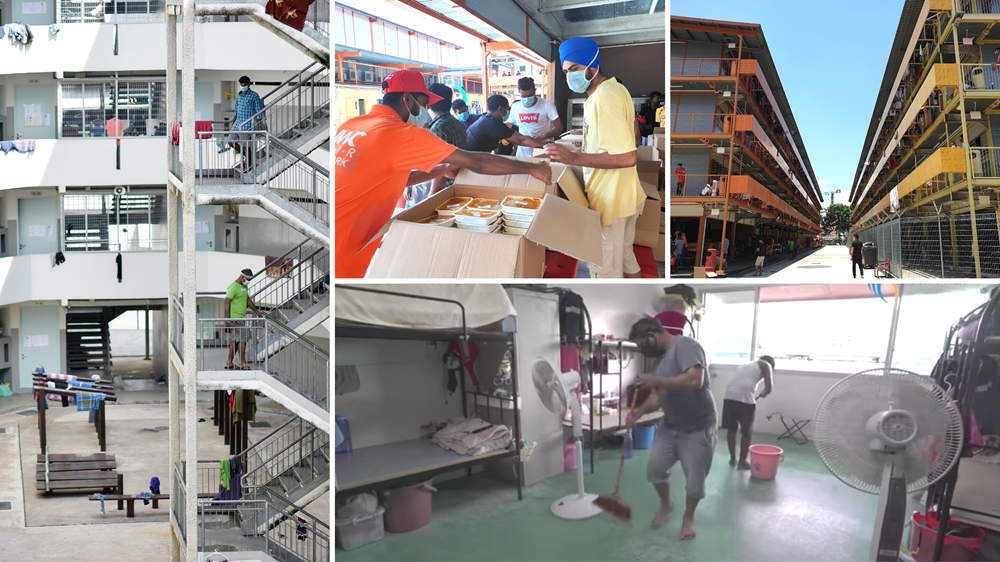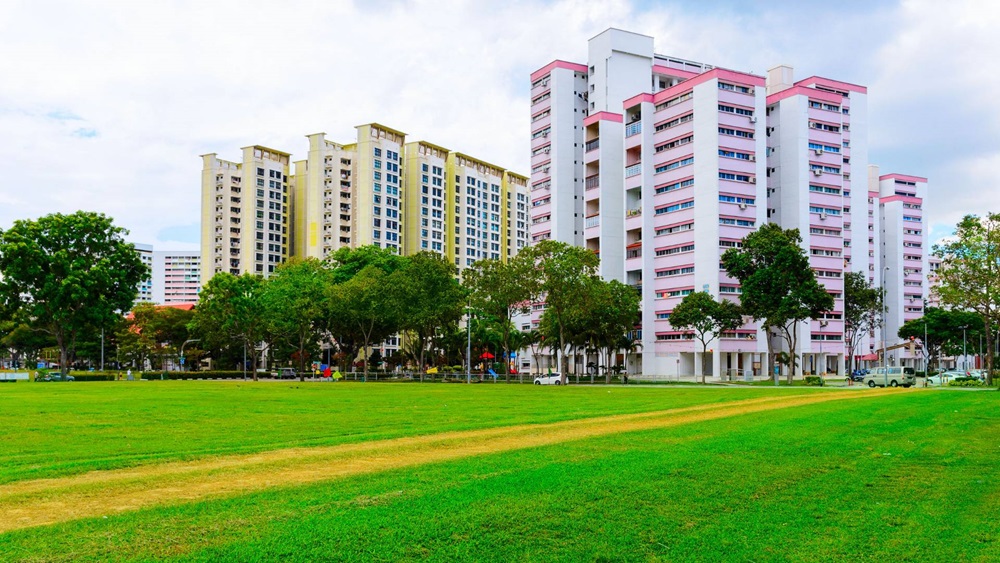
As more migrant workers are recovering from COVID-19 or being cleared to resume work, the Inter-agency Taskforce (ITF) is currently working with dormitory operators and employers on the housing arrangements for these workers.
Currently, some workers have been housed temporarily in sites such as army camps and sports halls, as well as vacant HDB blocks and private apartments slated for redevelopment.
To reduce the current density in the dormitories, the Government will be building additional dormitories with higher standards over the coming months and years.
Short-to Medium-Term Arrangements
By the end of 2020, additional space to house around 60,000 workers will be created through the following:
- New Quick Build Dormitories (QBDs), which are temporary structures that can be constructed quite quickly with a low density. These dormitories will last for around two or three years, and can house about 25,000 people in total.
- Unused state properties, including former schools and vacant factories, will be temporarily fitted out to house around 25,000 people in total.
- The Government is in discussion with contractors on building additional Construction Temporary Quarters (CTQs) to house their workers near the worksite and cut down on the need for transportation.
Longer-Term Arrangements
Moving forward, there are plans for new purpose-built dormitories (PBDs) to house up to 100,000 workers, which will replace the temporary accommodations built this year. This new building programme will take several years to complete, with the aim of having 11 new PBDs ready over the next one to two years.
All of these dormitories will have amenities like minimarts, barber services, indoor recreation facilities, and blocks will be well spaced out to ensure good ventilation. Workers living in these dormitories will have ready access to medical care and support.
With the additional housing capacity in place, the Government will be able to decant workers from existing dormitories, and undertake major upgrading of these dormitories to ensure that the new standards are met.
Improved standards and dorm operating model will be piloted
A set of standards and specifications will be developed for the new dormitories, which will look into the design, facilities, management and regulation of these dormitories, and will factor in social interaction and disease response needs.
These efforts aim to make dormitory living and design more resilient to public health risks, including pandemics. Lessons learnt from the current COVID pandemic will be taken in, with feedback sought from relevant stakeholders.
These improved standards will be piloted in the upcoming quick build dormitories (QBDs):
- Living space per resident: at least 6 sqm (not including shared facilities), from at least 4.5 sqm per resident (including shared facilities) currently.
- Maximum of 10 beds per room, where only single deck beds will be used with 1m spacing between the beds. Currently, there are no limits on the occupancy per room. In practice, dormitories typically have 12-16 beds per room, with
mostly double decker beds.
- One toilet, bathroom and sink to every 5 beds, an improvement from every 15 beds currently.
- More sick bay beds – at least 15 per 1,000 bed spaces. An improvement from the current requirement of just one sick bay bed per 1,000 bed spaces.
The Government is also studying the possibility of developing the purpose-built dormitories on a different model compared to the present system, where currently land is released for commercial operators to bid, build, or operate.
Everyone has a part to play
While physical standards are being improved, it is also important to uplift the capabilities of dormitory operators and adjust the daily living habits of dormitory residents. The pilot aims to instil a new level of discipline on safe living within dormitories.
The additional and improved housing arrangements is expected to come at a cost, which is necessary to keep workers safe and allow Singaporeans to continue benefiting from their contributions. Adjustments may be made for permanent new dormitories based on the pilot’s effectiveness, scalability, and sustainability.
Given Singapore’s land constraints, some dormitories will be located closer to residential areas. This will require the support from Singaporeans as well, in appreciating the workers who keep Singapore going.
Read more here.
We use cookies to tailor your browsing experience. By continuing to use Gov.sg, you accept our use of cookies. To decline cookies at any time, you may adjust your browser settings. Find out more about your cookie preferences here .

















